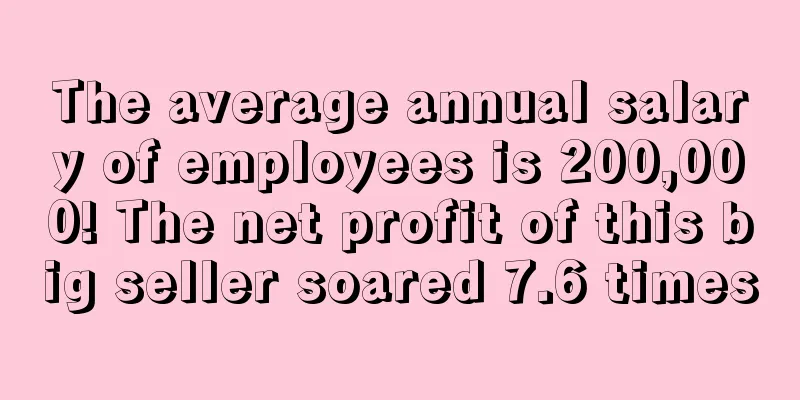The United States continues to launch "economic power outages", sellers' sales are worrying?

|
Sellers will have reasons to expect a decline in sales in the coming period.
The United States continues to launch "economic blackouts", and sellers' sales have plummeted
"Hold on to your wallet and don't spend for 24 hours." The American People's Alliance launched a nationwide "economic blackout" action at the end of February, calling on consumers to stop all consumption at Amazon, Walmart and all major retail stores on the 28th to express their dissatisfaction with the current US economic system.
Although the overall economy of major e-commerce platforms has not been affected by major fluctuations, a decline in traffic has inevitably occurred.
According to Similarweb data, Amazon’s website traffic dropped by 4.6% and its app traffic dropped by 1.7% on the same day; Walmart’s website and app traffic dropped by 6.5% and 2.5% respectively… Some Amazon sellers were caught in the crossfire. One seller said: “My peers around me have been affected, and their sales have all dropped.”
"Today's order volume is indeed much less, estimated to be about 10%-15% less," a seller said: the order volume that had finally increased with great difficulty has returned to the pre-liberation era. An operator said angrily that he finally found an excuse to explain to the boss why the order volume was so low today. There are also buyers asking if they can buy products from other channels because they want to boycott Amazon. However, in the view of some sellers, the early decline in their order volume was the result of multiple factors. It did not appear on that day, but there were signs of it long ago.
Since mid-to-late February, sellers on multiple e-commerce platforms, including Amazon and TEMU, have reported a severe decline in sales. Under the combined effect of tariffs, many sellers have seen their order volumes halved or even dropped to zero. Some sellers have even experienced the largest weekly drop in recent years. This situation continued until early March, with non-essential items and high-priced goods being hit even harder.
However, this "economic blackout" action has not ended. After February 28, there will be an "economic blackout" activity every Friday until the end of April↓
March 7-14: Amazon blackout (no Amazon purchases, no Prime subscriptions) ; March 21-28: Nestle Blackout (boycott Nestle brands ); March 28: Second 24-hour economic blackout ; April 7-13: Walmart power outage ; April 18: The third 24-hour economic blackout ; April 21-27: General Mills outage ;
Moreover, according to foreign media data, there will be another round of irregular "economic blackouts" in May, such as the Amazon boycott from May 6 to 12; the Walmart boycott from May 20 to 26; and the Target boycott from June 3 to 9...
According to the timeline, the "economic blackout" occurred during Amazon's spring sale and Easter.
Amazon's announced spring sale time is March 25 to 31, which means that the "economic blackout" from March 7 to 14 will not affect Amazon's spring sale, and may even turn into hunger marketing, thereby stimulating sale sales. However, the "economic blackout" on the 28th may cause a certain impact during the sale.
In previous years, Easter was usually held in March or April. This year, although the holiday activities have not yet begun, Amazon has launched a digital holiday store called "Easter Store" in advance, perhaps to promote consumption, just to miss the "economic blackout" period.
Obviously, this "economic blackout" is the "crop" of the continued decline in the US consumer confidence index and concerns about continued price increases. Data showed that the US consumer confidence index fell to its lowest level since November 2023 in February, and it is expected that the overall inflation rate in the next 5 to 10 years will reach 3.5%, higher than the 2% target set by the Federal Reserve.
The downturn in consumer sentiment has undoubtedly cast a shadow on the U.S. economy, but some analysts have pointed out that some consumers who planned to shop on the same day may postpone their purchases to the next day, so retailers will still get the money in the end. Anna Tuchman, a professor of marketing at the Kellogg School of Management at Northwestern University, also believes that the "economic blackout" may have a certain impact on retail sales on the same day, but it is difficult to sustain.
Although the actual effect of the "economic blackout" remains to be seen, the tense situation currently faced by sellers cannot be ignored.
As the tariff policy comes into effect, sellers’ costs are “raised”?
On March 4, Eastern Time , Trump's additional 10% tariff on Chinese imports came into effect. Since then, the total tariffs on Chinese goods have accumulated to 20% since Trump took office.
Even though the ocean freight rates have been falling for seven consecutive weeks, with the Shanghai to West Coast prices falling by more than 14%, some freight forwarders' quotations have started to rise. Currently, logistics companies have not raised prices, but it is predicted that freight rates will rise again when the market returns to normal.
Industry insiders pointed out that as the tariff policy came into effect, its impact has gradually become apparent. Although the number of views of related products has not decreased significantly, the conversion rate has dropped sharply. The proportion of consumers who finally complete the payment after adding products to the shopping cart has dropped significantly.
The significant increase in tariffs has directly affected the costs of sellers. Taking a product priced at $10 as an example, under the tariff policy, the comprehensive costs such as logistics and tariffs may increase by 40%. The profits of sellers on Weibo appear precarious under the high costs, especially for some involuted categories.
In order to preserve their profit margins, some platforms have already started to raise the prices of some low-priced goods. When the tariff costs are passed on to the goods, it is unknown whether consumers will switch from buying cross-border goods to buying local products. Other data shows that a 10% tariff only reduces TEMU's price advantage over Amazon from 40% to 34%, and TEMU's prices are still very competitive.
As the spring promotion is approaching, sellers' costs have been hit hard again. Amazon's advertising bids are quietly increasing. Some sellers have reported that the Amazon system has enabled the "Increase bids for high-traffic days" rule by default. Generally, it is checked by default, and as long as the seller does not actively modify it, it will be automatically applied.
If sellers are slightly negligent when creating advertising campaigns, the advertising bid will be automatically increased by 50%, which will undoubtedly significantly increase the seller's advertising costs, or even worse, cause advertising over-burning.
At that time, the changes in Amazon's front desk were also unfavorable to sellers. Products with coupons no longer only displayed the discount ratio or amount, but directly became the price after the coupon, marked "You pay $XX with coupon". For consumers, they can see the price more intuitively, but for sellers, without the effect of crazy promotions, there is naturally less impetus to stimulate consumers to place orders.
Many consumers are often attracted by preferential prices, but directly displaying the discounted price is equivalent to eliminating this attraction. On the other hand, the transparency of low prices may also force sellers to actively compress profits and maintain their competitiveness by relying on low prices, so as to achieve the purpose of reducing costs to survive, but this will also further accelerate the current situation of internal circulation.
It is not difficult to see the current status of the industry in 2025: the elimination rate is very likely to rise further. Although current events such as tariffs have brought various uncertain challenges, they also provide sellers with an opportunity for transformation. Sellers can take this opportunity to build their own long-term development path and find their own growth points amid challenges. Sales Economic blackout tariff |
<<: Crazy sales of 8 billion! Shanghai's big sellers made a fortune in the niche market
>>: Shenzhen remains the No.1 city for cross-border e-commerce
Recommend
Cainiao and Taobao Hong Kong jointly launched a direct mail service for small and light items at a shipping fee of RMB 6
What can you do with 6 RMB in Hong Kong? In Hong ...
eBay's best-selling toys and travel products are revealed!
The latest data from the eBay platform released t...
What is Trading Economics? Trading Economics Review, Features
<span data-docs-delta="[[20,{"gallery"...
What is Akulaku? Akulaku Review, Features
Akulaku is an installment shopping e-commerce plat...
Shipment attention! The typhoon is coming again
Super typhoon is coming Congestion, epidemics, an...
Sales of many sellers hit new lows, and Amazon delivery fees increased again
Recently, many Amazon sellers reported that sales...
Six major trends in the beauty industry in 2021! Skin care is more worthy of attention
As beauty standards and lifestyles change, the be...
Social commerce is becoming more popular, with Facebook being the most popular
Social commerce is one of the biggest trends in s...
What is Skycosplay? Skycosplay Review, Features
Skycosplay specializes in the production of custo...
What is timbuk2? timbuk2 Review, Features
Founded in 1989 in San Francisco, timbuk2 is a wel...
Sold out! Cross-border sales soared, with sales of 4 billion in one year!
Recently, cross-border sellers have successively ...
What is Hangzhou Quanzan E-commerce Co., Ltd.? Hangzhou Quanzan E-commerce Co., Ltd. Review, Features
Hangzhou Quanzan E-Commerce Co., Ltd. is a cross-b...
51 million monthly active users! Temu is "surging" in the European market
It has been more than a year since Temu came into...
With annual revenue of 2.8 billion, Amazon seller XGIMI Technology firmly holds the C position in the industry
The annual revenue of XGIMI Technology, the leadi...
Amazon and Chewy dominate the pet market with a market share of 30%
For American families, pets and children are the ...









